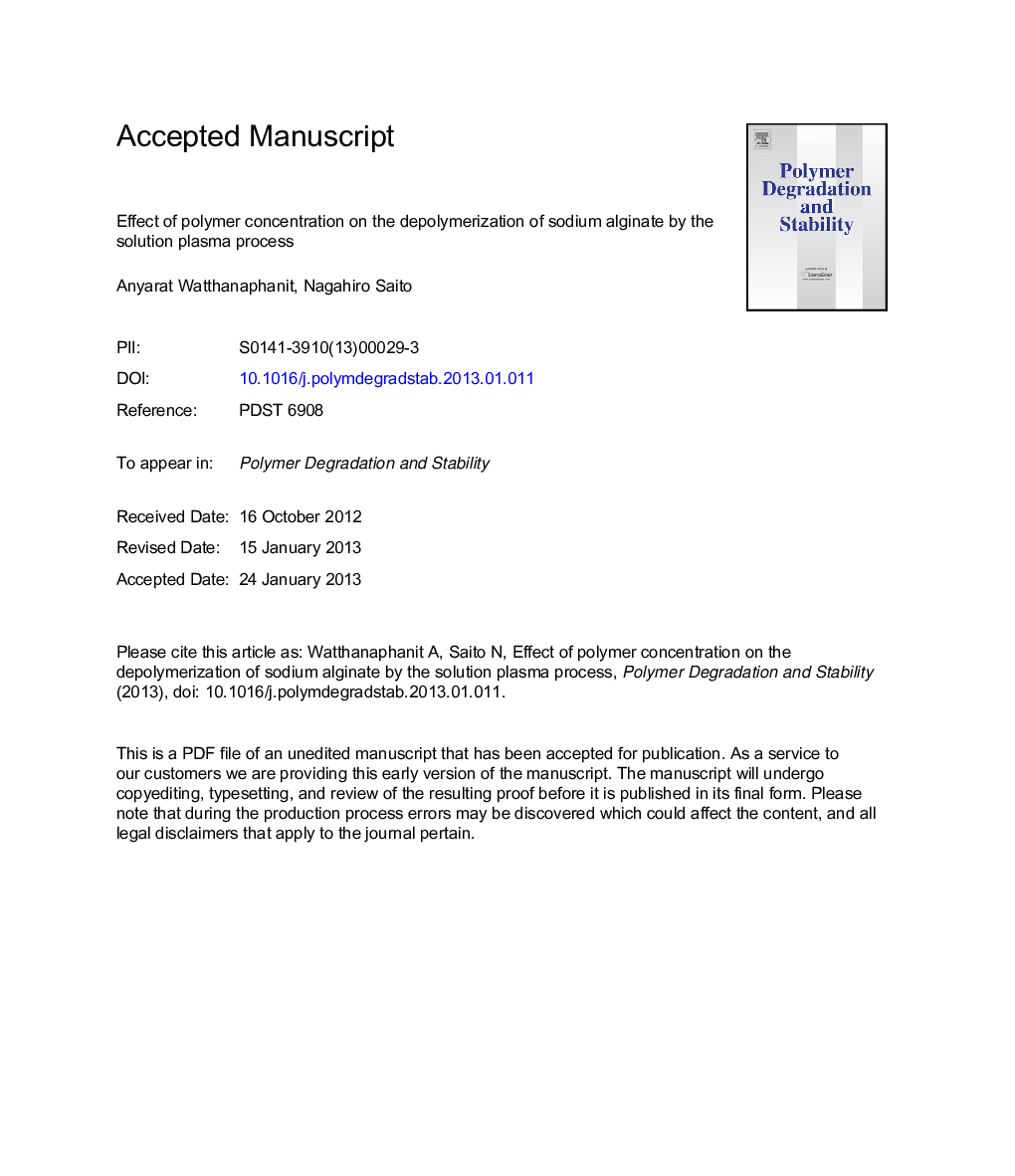| Article ID | Journal | Published Year | Pages | File Type |
|---|---|---|---|---|
| 5202353 | Polymer Degradation and Stability | 2013 | 36 Pages |
Abstract
Depolymerization of alginate was accessed, for the first time, by the plasma treatment in solution called solution plasma process (SPP). The process was done by applying an electrical discharge into a reactor containing sodium alginate aqueous solution. The key of the production is the generation of reactive species induced by the plasma in a liquid environment that can lead to the scission of polymer chains. Effect of polymer concentration on the SPP processing parameters and the depolymerization efficiency were studied. Three concentrations of sodium alginate solutions, i.e., 0.2, 0.5, and 0.9 %w/v, were prepared. The results showed that increasing concentration of the alginate solution decreased the applied voltage required for the generation of plasma. Optical emission spectra demonstrated that the generation of reactive species was the highest at the lowest alginate concentration (i.e. 0.2 %w/v). Therefore, molecular weight reduction of this concentration after the SPP was more remarkable than the others. The most significant species required for the depolymerization of alginate was the reactive hydrogen species. Molecular weight distributions (MWD) of the obtained low molecular weight alginates (LMALGs) for all concentrations were narrow. Furthermore, reduction trends of molecular weight and viscosity of alginate with varying operation times indicated that the depolymerization of alginate in aqueous solution by the SPP was affected by the combined contribution of two factors: (1) the amount of reactive species generated during the process and (2) the degree of chain entanglement of the polymers.
Related Topics
Physical Sciences and Engineering
Chemistry
Organic Chemistry
Authors
Anyarat Watthanaphanit, Nagahiro Saito,
